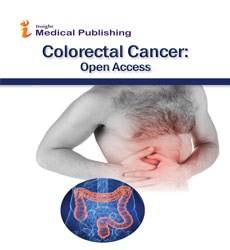Abstract
Small Bowel Carcinoma in the Setting of Long Standing Crohn s Disease
The small bowel comprises the longest portion of the gastrointestinal tract but despite that, it is an uncommon site for malignancies. In patients with Crohn’s Disease there is a 6-320 fold increased relative risk of small bowel adenocarcinoma compared to the general population. This increased risk is due, in part, to the pathology of Crohn’s disease, a chronic inflammatory bowel disease, which leads to an increased risk of dysplasia secondary to mucosal inflammation and healing. The presentation of small bowel carcinoma varies and may be subtle, often leading to delayed diagnosis. In Crohn’s patients, symptoms often present similarly to those of a flare, with abdominal pain, change in bowel habits, anemia, or with symptoms suggesting new fistulae or strictures. Due to the non-specific nature of symptoms, the diagnosis is often delayed as clinicians attempt to treat the flare before undertaking extensive investigation. It is therefore critical that recurrent Crohn’s symptoms, especially those suggesting obstruction or new stricture or fistula in patients with long standing disease quiescence, raise the suspicion for the development of cancer. There are currently no recommendations for cancer surveillance in Crohn’s patients, likely in part due to the difficulty in endoscopic surveillance of the small bowel and the overall low prevalence of Crohn’s disease in all patients with small bowel adenocarcinoma. With newer technology, such as CT or MR enterography, imaging to survey the bowel is more feasible, although this will not obviate the need for tissue diagnosis in Crohn's patients with positive imaging findings.
Author(s):
Erin Duggan and Randolph M Steinhagen
Abstract | Full-Text | PDF
Share this

Google scholar citation report
Citations : 92
Colorectal Cancer: Open Access received 92 citations as per google scholar report
Abstracted/Indexed in
- Google Scholar
- JournalTOCs
- China National Knowledge Infrastructure (CNKI)
- Directory of Research Journal Indexing (DRJI)
- WorldCat
- Publons
- International Committee of Medical Journal Editors (ICMJE)
- Secret Search Engine Labs
Open Access Journals
- Aquaculture & Veterinary Science
- Chemistry & Chemical Sciences
- Clinical Sciences
- Engineering
- General Science
- Genetics & Molecular Biology
- Health Care & Nursing
- Immunology & Microbiology
- Materials Science
- Mathematics & Physics
- Medical Sciences
- Neurology & Psychiatry
- Oncology & Cancer Science
- Pharmaceutical Sciences

